Patterns for Guernseys, Jerseys and Arans
Fishermens Sweaters from the British Isles
Gladys Thompson
third revised edition
Dover Publications, Inc., New York
Copyright 1979 by Dover Publications, Inc.
Copyright 1969, 1971 by Gladys Thompson.
All rights reserved.
This Dover edition, first published in 1971, is an unabridged, revised republication of the work originally published in 1969 under the title Patterns for Guernseys and Jerseys. It is reprinted by special arrangement with B. T. Batsford Limited, London, publisher of the original edition.
Library of Congress Catalog Card
Number: 71-136140
International Standard Book Number
ISBN-13: 978-0-486-22703-0
ISBN-10: 0-486-22703-0
Manufactured in the United States by Courier Corporation
22703021
www.doverpublications.com
Contents
N OTE TO A MERICAN K NITTERS
This excellent book was originally written for the British market and therefore calls for the use of British materials, some of which are not generally available in the United States. The five-ply yarn called for in many of these patterns is one example, and I suggest that you substitute a good American sports yarn.
In Britain the system for denoting sizes of needles is the reverse of the American system; therefore the 13 or 14 needles specified herein are actually very fine needles.
The sweaters in this book are designed to be wind and waterproof, being very tightly knit on #2, #1 or #0 (US) needles at a gauge, or tension, of 8 to 9 stitches to an inch. Some American knitters prefer to work at a gauge of 5 stitches to one inch, and may like to use knitting worsted for this.
All wools have a preferred or optimum gauge (number of stitches to one inch) for a given project which is usually given at the beginning of knitting instructions. Tight knitters need larger needles to achieve optimum gauge; loose knitters can attain it with smaller needles.
The only way to find out what size needles you should employ is to experiment. Cast on 30 stitches with the wool and needles you wish to use. Work in stocking-stitch for 3 to 4. Take the piece off the needle and steam it gently to block it. Lay it on a table and place two pins exactly 3 apart horizontally, at about the center. Count the number of stitches between the pins and divide by three. The result is the number of stitches you are getting to an inch and represents your gauge. Do not neglect stitches,  stitches or stitches; they are vitally important. If you have more stitches, or fractions of a stitch than specified, try a larger needle. If you have less, try a smaller needle.
stitches or stitches; they are vitally important. If you have more stitches, or fractions of a stitch than specified, try a larger needle. If you have less, try a smaller needle.
If the instructions give you the necessary gauge when measured over stocking-stitch, you are safe even if you plan to use cable or Aran patterns. However, since cable and Aran patterns need more stitches per completed inch than plain knitting, extra precautions are necessary if the instructions specify gauge in pattern. The only way to find out how many more stitches might be needed is to cast on the number of stitches given for the front and try the patterns for four or five inches. If the resulting piece is not the right width, keep trying with larger or smaller needles according to whether the piece is too wide or too narrow. Dont rip your nice big swatch; it will do for the start of a fine cap.
It is worth your while to take some pains with your gauge before starting a project, as it may save you possible disappointment and ripping later on.
Good Knitting!
E LIZABETH Z IMMERMAN
Babcock, Wisconsin
May, 1971
Preface
This book is a revised edition of Guernsey and Jersey Patterns published in 1955, omitting some of the knitting history and stories, but giving more patterns, and including several new items which have been discovered since the first book was written. These include full directions for knitting a Channel Islands guernsey. Also one from Fife in anchor pattern, and full directions for making two sets of sweaters and cardigans adapted for ladies wear, from my patterns by the Womens Home Industries. They are knitted in Filey and Seahouses designs. Earlier Filey patterns dating from 1822 have been included, also a Sheringham and two Norfolk guernseys.
The patterns seen on Fishermens guernseys have always interested me, and knowing that whilst the fishing families continued to knit them, the patterns would be safe, I also knew they were never written down; so I started years ago to learn and note them for reference. The patterns are traditional, and belong to families and places, and often have local names either connected with the sea or the mens occupation.
In 1938 I sent a group of fishermen dolls to an exhibition in London. The four fishermen wore different patterned Yorkshire guernseys, and two fisher-women were included in the group, one wearing a lilac sun-bonnet, and knitting a tiny guernsey; the other in a black dress with a crochet shawl. Queen Elizabeth, The Queen Mother, saw them and asked me their history, and I told her I hoped to write a book about the patterns. She was very interested, and made me promise to carry out this idea.
Acknowledgement
The author would like to acknowledge the great help and kindness received whilst collecting information for this book from Her Majesty Queen Elizabeth the Queen Mother, Lady Cecilia Howard, Miss Rose, the Scottish Womens Rural Institutes, Mr Lucas of the National Museum, Dublin, Mrs Marshall Frazer, and Miss Doris Cleverly.
She also wishes to acknowledge the following owners of guernseys who allowed them to be photographed, and the patterns saved for reference: Mr Matt Cammish for .
The author would also like to record thanks to Mr Lambert Smith of Whitby for kind permission to use the Sutcliffe photographs, and for his kind permission to reproduce text on pages 81 to 85. She greatly appreciates also the help received from Mr S Royle and Mr Masser who were responsible for many of the excellent photographs, and from Mr H Stott who drew many of the graphs. For other help with knitting patterns the author would like to record her thanks to Miss Mary Colbert, Mrs Cowie and Mrs Laidlaw, and to Mrs ORourke for her help in correcting the patterns.
The words jersey and guernsey are often discussed, and to clarify this I quote some paragraphs from a letter written by the late Lieutenant Colonel Marshall Frazer, which appeared in The Sunday Times some years ago.
Dr Rex Binning seeks an explanation of the difference between the two garments which took their names from the two bailiwicks of the Channel Islands. Almost invariably guernseys are in thick dark blue wool, whilst jerseys are thinner, and of various colours. Jerseys became better known owing to the very large number of Jersey men who entered the Newfoundland enterprises about 1600, and gave rise to local shipbuilding, and the supply of woollen garments for the mariners.
The two garments are really identical in shape, but differ by reason of the jersey knit (Ouvre in the patois), which is unlike any English, French or Guernsey type, but it would take an expert in wool-craft to tell the difference.
The shape of the guernsey is definitely squarereminiscent of the short smock worn by country or farm workers years ago, and built for hard wear, with quality and good workmanship throughout.
When starting to knit a guernsey, many of the fishermens wives cast on in double wool, and also cast off the cuffs in the same way. This looks rather bulky, but adds to the strength of the garment. Seam stitches are always used, starting where the welt finishes, and gussets are worked under each arm from an increase in the centre of the seam stitches and finish with the pattern half way down the sleeve. The seam stitch continues to the cuff. These gussets add years to the wearing qualities of the guernseys.
Next page
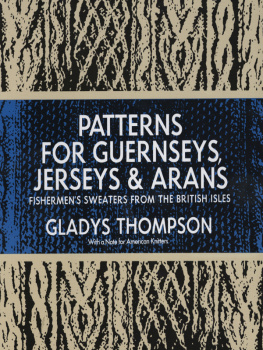
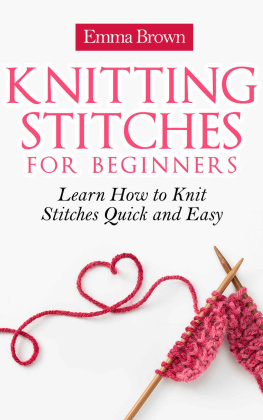
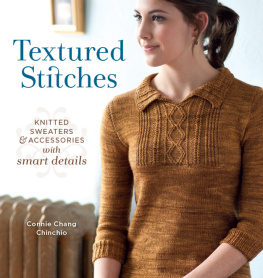

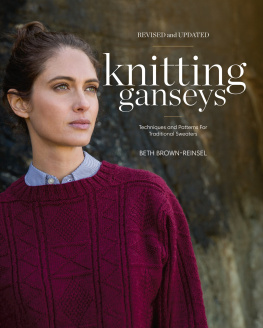


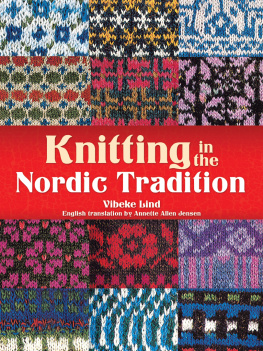
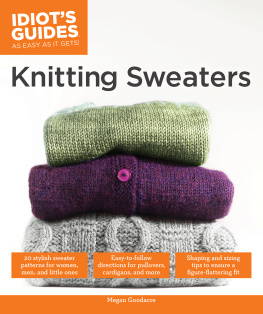
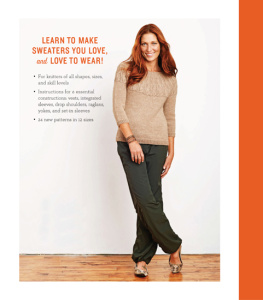
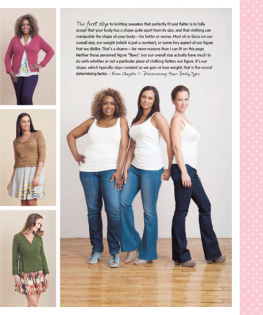
 stitches or stitches; they are vitally important. If you have more stitches, or fractions of a stitch than specified, try a larger needle. If you have less, try a smaller needle.
stitches or stitches; they are vitally important. If you have more stitches, or fractions of a stitch than specified, try a larger needle. If you have less, try a smaller needle.